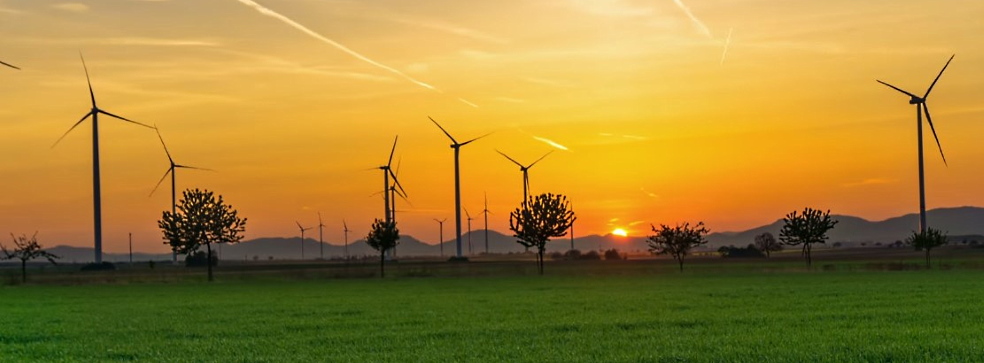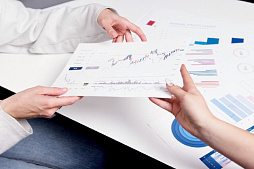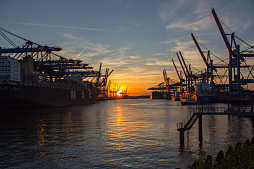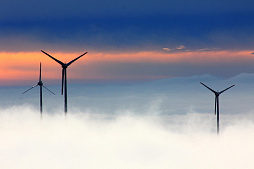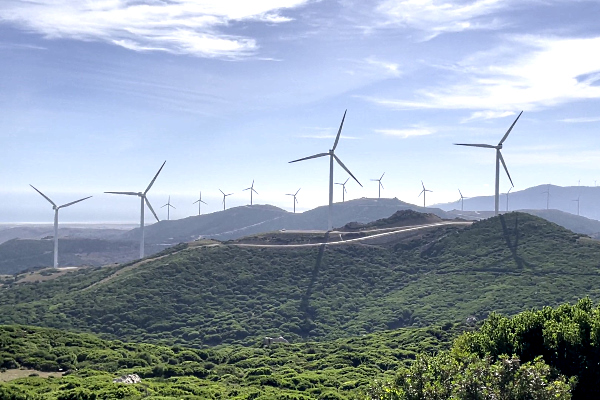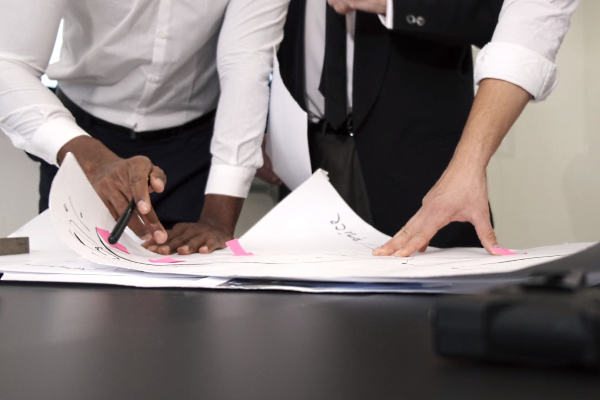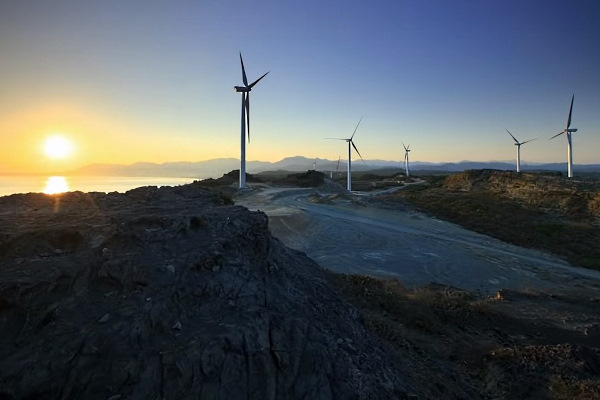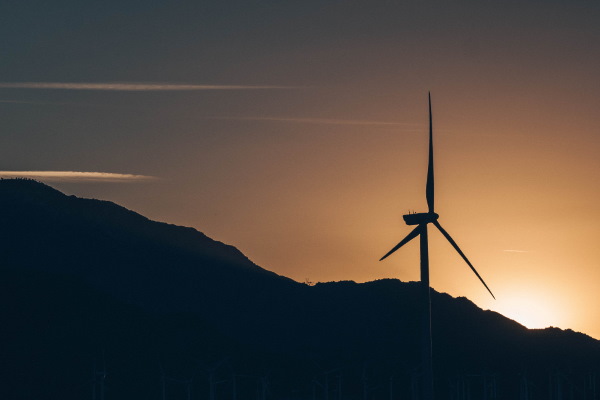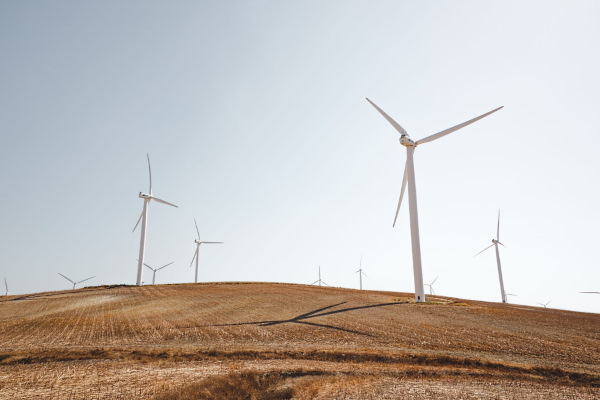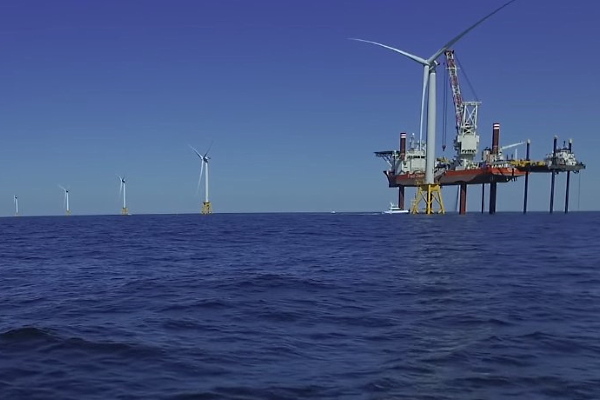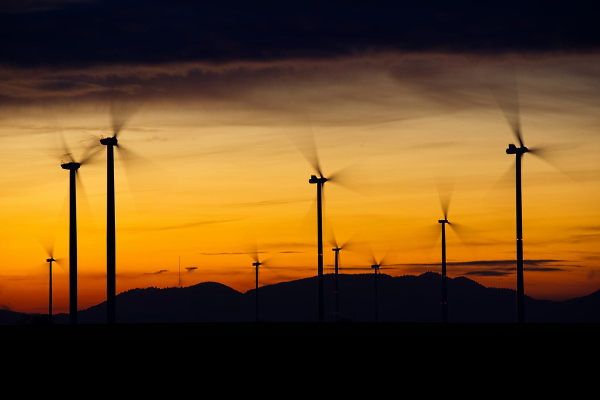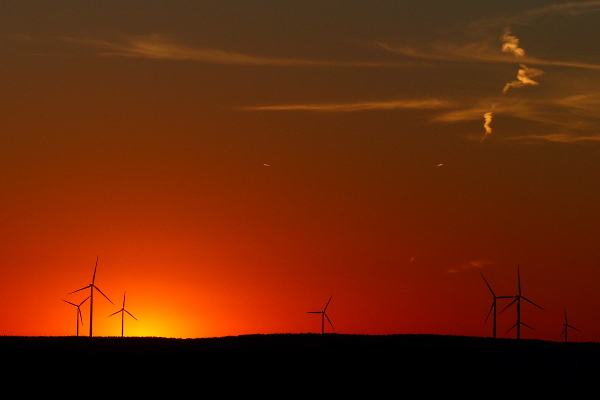To consider an application for financing, fill out the form and send it to us by e-mail along with the project brief, or contact our experts
WPPs do not pollute the environment.
They do not require significant operating costs.
However, the relatively high cost of construction of wind farms and the unpredictability of generation remain significant disadvantages of this technology.
In general, wind farm construction costs per megawatt of installed capacity are decreasing every year due to technical advances in the production of wind turbines — the most expensive component, which accounts for up to 70-80% of the total investment costs of the project.
According to European statistics, in 2015, each MW of installed capacity for new onshore wind farms required € 2 million in investment, and each MW of installed capacity for offshore wind farms cost € 4.5 million.
In 2019, these figures reached 1.3 million euros and 2.3 million euros, respectively, with a clear trend towards further decline.
According to the results of 2019, Spain became the leader in the construction of new wind farms, having made the final decisions on the implementation of 28 investment projects with an average investment of about 1 million for each megawatt of installed capacity.
Link Bridge Financial LTDA, a company, offers financing for the construction of wind farms all over the world.
We and our partners are present in many countries, offering customers a comprehensive service, financing and lending, advanced technologies and a high level of reliability.
Wind farm construction cost
Since its inception, the wind energy sector has grown rapidly around the world.By 2050, the installed capacity of wind farms will be 20 times higher than in 2010.
This growth is directly related to a decrease in the cost of construction of wind power plants, including the enlargement and reduction in the cost of wind turbines, as well as auxiliary electrical equipment.
Wind power is currently the second renewable power generation technology after hydropower. Unlike photovoltaics, this technology is actively developing not only in tropical countries, but also in almost all developed countries of the world, including the EU, Great Britain, Canada, etc.
The decrease in the cost of a megawatt of installed capacity of wind power plants is accompanied by a significant increase in the size of wind turbines. Whereas in the 1990s, turbine capacity rarely exceeded 1 MW, today the capacity of new turbines in large projects is usually 3-5 MW or more.
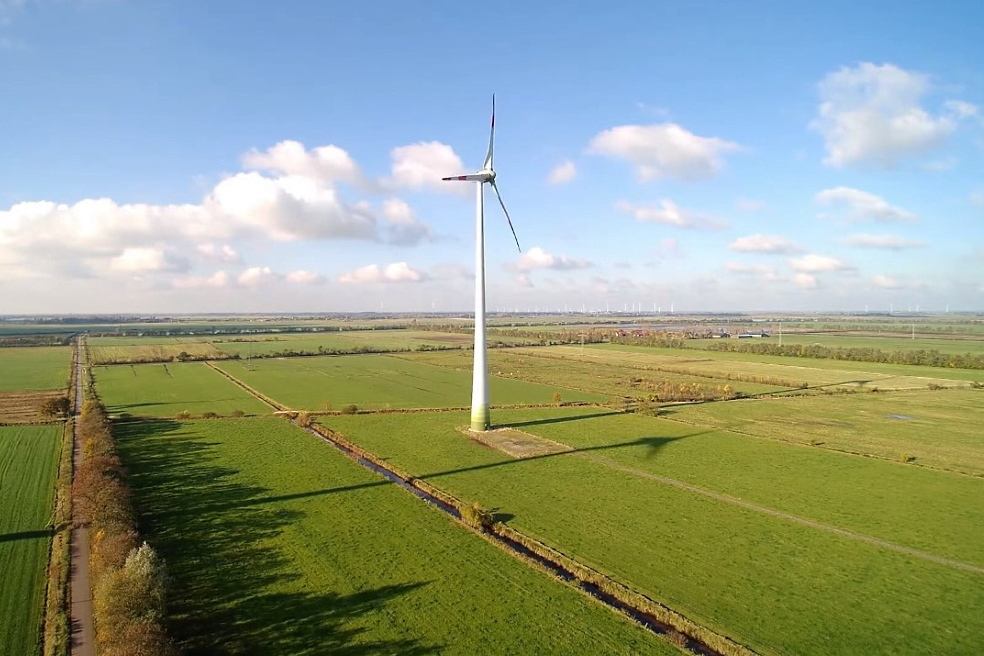
The evolution of the cost of building and operating a wind farm is determined by a number of factors.
To calculate the dynamics of costs, it is necessary to analyze the following points:
• Scaling up projects.
Larger wind farms and larger equipment can result in lower investment costs per MW of installed capacity, with different scaling factors for each type of project.
• Reducing technology costs.
The progressive decline in investment costs is largely due to improved technology and personnel training, component standardization, design improvements, and the transfer of production facilities to developing countries.
• Reduced operating costs.
This includes experience in power plant management, training maintenance teams, improving the reliability and maintainability of the main electrical components, making them easier to maintain.
• Increase in electricity production.
Improving equipment and increasing the time of its uninterrupted operation in the power grid leads to an increase in electricity production without additional costs.
The approximate evolution of costs in 2010-2018 is presented in the table*.
|
Cost components (millions of euros per MW of installed capacity) |
2010 | 2011 | 2012 | 2013 | 2014 | 2015 | 2016 | 2017 | 2018 |
| Wind generator | 0,81 | 0,78 | 0,76 | 0,74 | 0,73 | 0,71 | 0,70 | 0,68 | 0,67 |
| Internal electrical installations | 0,06 | 0,06 | 0,06 | 0,06 | 0,06 | 0,06 | 0,06 | 0,06 | 0,06 |
| Electrical substation and power lines | 0,18 | 0,18 | 0,18 | 0,18 | 0,18 | 0,17 | 0,17 | 0,17 | 0,17 |
| Engineering design and construction | 0,10 | 0,09 | 0,09 | 0,09 | 0,09 | 0,09 | 0,08 | 0,08 | 0,08 |
| Additional expenses | 0,02 | 0,02 | 0,02 | 0,02 | 0,02 | 0,02 | 0,02 | 0,02 | 0,02 |
| Total construction cost | 1,17 | 1,14 | 1,12 | 1,08 | 1,07 | 1,05 | 1,03 | 1,01 | 1,00 |
| Operating cost | 0,06 | 0,06 | 0,05 | 0,05 | 0,05 | 0,05 | 0,05 | 0,05 | 0,05 |
* - approximate cost of large onshore wind farms.
As you can see from the above table, the main reason for the decline in wind farm construction costs is the decrease in the price of wind turbines.
Such important categories of investment costs as electrical substation, power lines, engineering design, construction and installation works have hardly fallen in price over the past decade.
The future of wind power: multi-megawatt offshore projects and their costs
Experts are now highlighting two main trends in the wind energy sector.They include the significant increase in turbine size and the construction of offshore wind farms.
Implementing a multi-megawatt wind power project is not the same as installing a small 50 kW turbine for autonomous power supply. The cost of an installed megawatt largely depends on the scale of the investment project.
Today, the average cost of building a wind farm in Europe is about 1 thousand euros per 1 kW of installed capacity for large projects.
For small-scale systems, this figure is already 2-5 thousand euros per 1 kW of installed capacity, depending on the selected equipment, the remoteness of the construction site and the complexity of the work.
Recent studies suggest that onshore wind turbines will increase in size. On the other hand, offshore wind turbines have higher growth potential, which will allow this technologically mature energy source to lower project costs for the foreseeable future.
Why do companies need to install larger wind turbines?
The energy produced by wind turbines is proportional to the area of the blades. Therefore, a larger rotor diameter means more power and therefore fewer turbines to generate a certain amount of energy with reduced construction, land rental and maintenance costs.
Increasing the rotor diameter and the length of the blades will entail logistical problems associated with the transportation and installation of components on the construction site. In this respect, offshore wind farms are more promising.
On land, generators do not grow as quickly in size; at sea, we see more impressive capacities. Offshore wind energy is growing at a rapid pace thanks to the commitment to this technology in countries like Germany or the UK.
Projects with wind turbines with a capacity of 10 MW each appear today. This is due to the simpler and cheaper transportation of huge structures to coastal areas using special ships. The future of the sector lies in the construction of large offshore wind farms near the coast, where the winds are constant and, therefore, electricity production is most predictable.
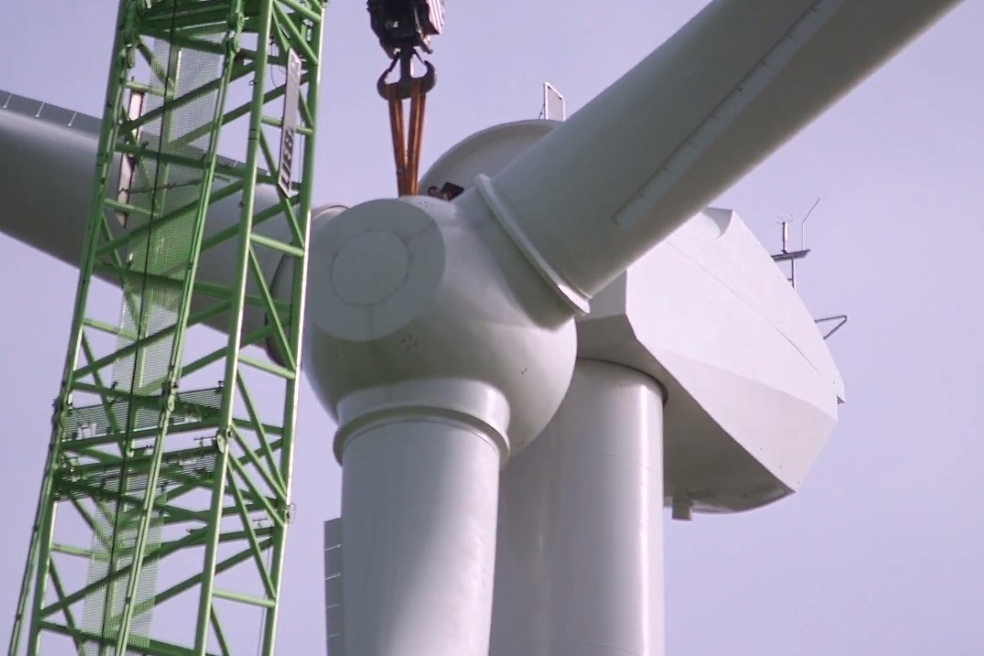
The decline in construction costs is far from the only trend that is observed in this sector today.
Wind farms still have a number of disadvantages that need to be eliminated in the course of the development of technology and materials.
Although wind turbines do not emit harmful substances, wind farms have some impact on the environment. The most obvious impact they have is the inevitable change in the landscape, which cannot be corrected by any architectural technique. Another effect is a reduction in bird populations due to collisions with moving blades. Offshore wind farms also negatively impact fish populations.
Experts have no doubt that these problems will be overcome in the near future without significant impact on the cost.
Thanks to advances in the design of wind turbines, this renewable source, together with photovoltaics, is seen as the future of global energy sector.
Wind power plant construction cost structure
Investment costs associated with the design, construction, operation, repair and maintenance of a wind farm consist of a number of components.A clear understanding of each of these is critical to the success of every energy project.
The site for the construction of the wind farm is the starting point for assessing the cost and economic feasibility of the project. The foundation, type and size of the wind turbine and the electrical connection all depend on the location chosen.
The initial investment costs actually represent the funds that are required for the full cycle of construction of the facility, from the drawing to commissioning.
Wind power plant construction cost structure:
• Wind turbine cost.
Currently, the costs associated with the turbine account for up to 70-80% of the total project cost. This includes the cost of purchasing wind turbines and delivering them to the construction site, as well as assembly and installation work. This cost can vary widely. The price quoted by the manufacturer is subjective as it may only include the supply of the turbines or the total amount of work required to deliver and install them.
• Electrical equipment.
This equipment is required to connect the wind turbine to the grid. The list includes transformer substations, transmission lines and other types of equipment that form an important component of investment costs.
• Construction works.
This is any work to be carried out on the site for the construction of the wind farm, as well as for the preparation of the site. The main costs are associated with the foundation on which the wind turbines are supported, as well as the construction of access roads and trenches for medium voltage cables.
• Medium voltage line and communications.
This includes the cost of the cables needed to connect wind turbines to the substation, as well as fiber optic communication cables.
• Other expenses.
These are the costs of obtaining permits, engineering design, research, project management, quality control and environmental measures.
Naturally, the listed costs depend on the scale and characteristics of a particular wind power project, its location, technologies, conditions and method of its implementation.
How much does wind power generation cost?
Which source of electrical energy is the most profitable - solar energy or wind energy?
This is the cornerstone question that investors ask when looking for investment opportunities and planning new projects. The same issue is of concern to government agencies when planning the energy balance of countries and regions.

In this regard, production costs have to be taken into account.
This figure includes all costs that the company will have to bear when the wind farm is put into operation:
• Operating costs. Operation and maintenance required during the entire life of the wind farm, land lease, management, insurance and taxes.
• Financing costs. Payment of funds received under external financing, which is usually necessary for the implementation of large projects.
It is difficult to compare technologies with different investment requirements, different lifetimes, production factors and operating costs that vary depending on the type and location of the project.
The Levelized Cost of Electricity (LCOE) is a useful tool that allows investors to compare the costs of different types of technologies (solar, wind, and others). The LCOE concept in a simplified form consists of calculating the total average cost of building and operating a power plant divided by the total electricity that will be generated during its life.
The LCOE of large offshore wind farms today starts at € 30 per MWh under favorable conditions, but this figure can go up to € 50 per MWh under unfavorable wind conditions.
This indicator significantly depends on the scale of the project and the selected technologies, therefore, over the years, the LCOE of new projects decreases.
Why LCOE is important for investors:
• Compare different options to make an informed investment decision.
• Understanding the break-even point, that is, the minimum price of electricity at which you can sell it to consumers without earning or losing money.
• Using LCOE as a tool to measure competitiveness between different energy sources or even within the same technology.
• Assessing the evolution of competitiveness between technologies over time.
To obtain the most accurate results, the LCOE calculation model must take into account a large number of variables, such as the wind resource at a particular location. For example, wind farms in Brazil may be more expensive to build than in China, but Brazil's better wind resource contributes to better performance.
Scientific institutes and international organizations use different models to accurately calculate the levelized cost of electricity.
These models contain numerous variables, including the investment cost and lifetime of the wind farm, and the cost of repairs and maintenance each year.
Sensitivity analysis of these variables allows investors to determine what specific actions can be taken to reduce energy costs for a given project. The conclusions can be different, from changing the equipment supplier to revising the project location.
It should be noted that even when the LCOE is widely used to compare different technologies, the methodology has significant limitations and its results are highly dependent on assumptions.
For this reason, companies additionally use other metrics such as LACE.
Do you need to finance or build a wind farm?
Contact us at any time.



